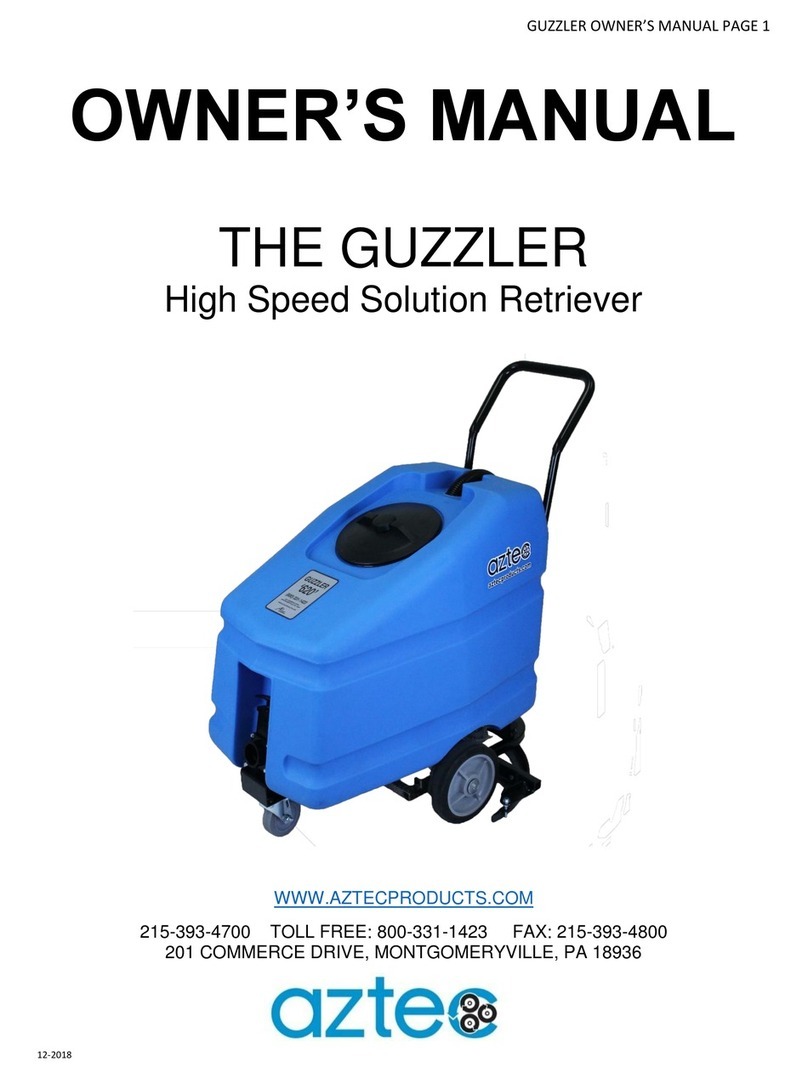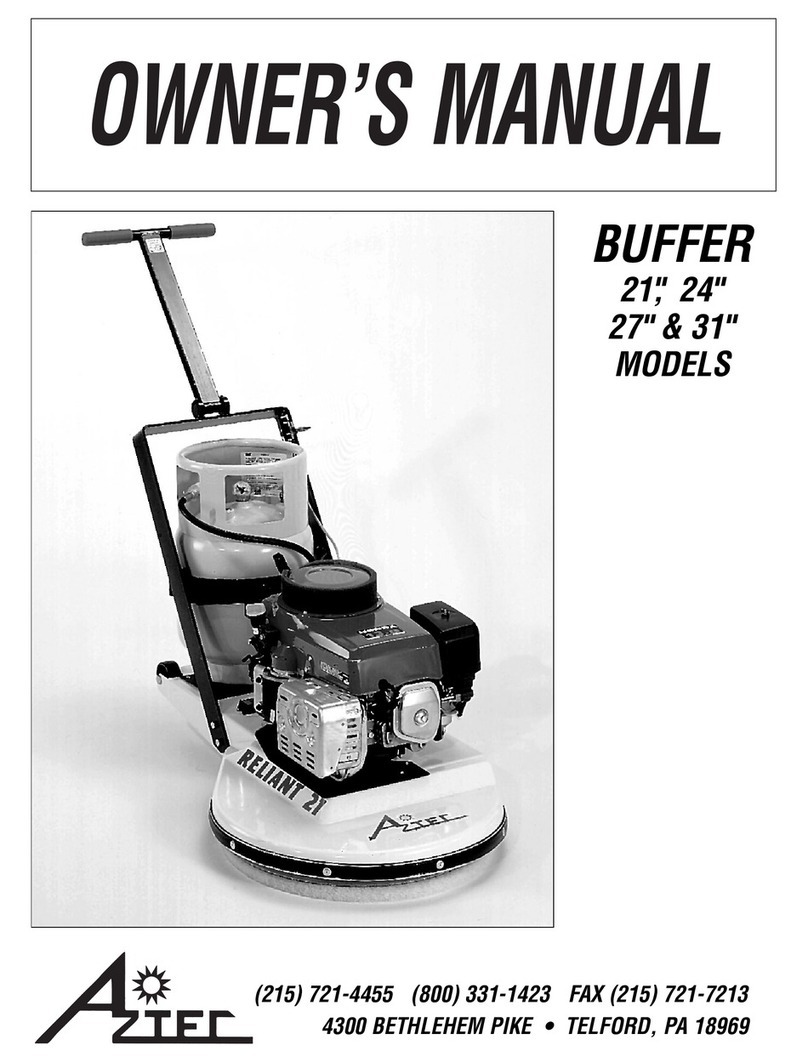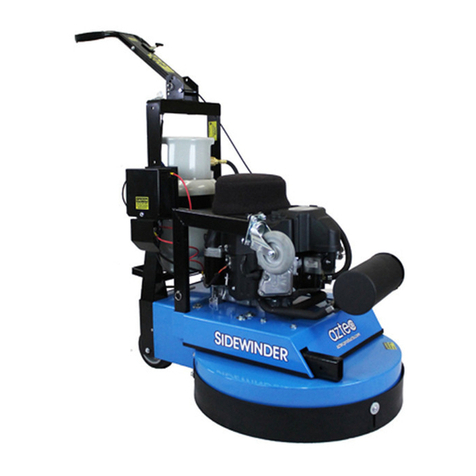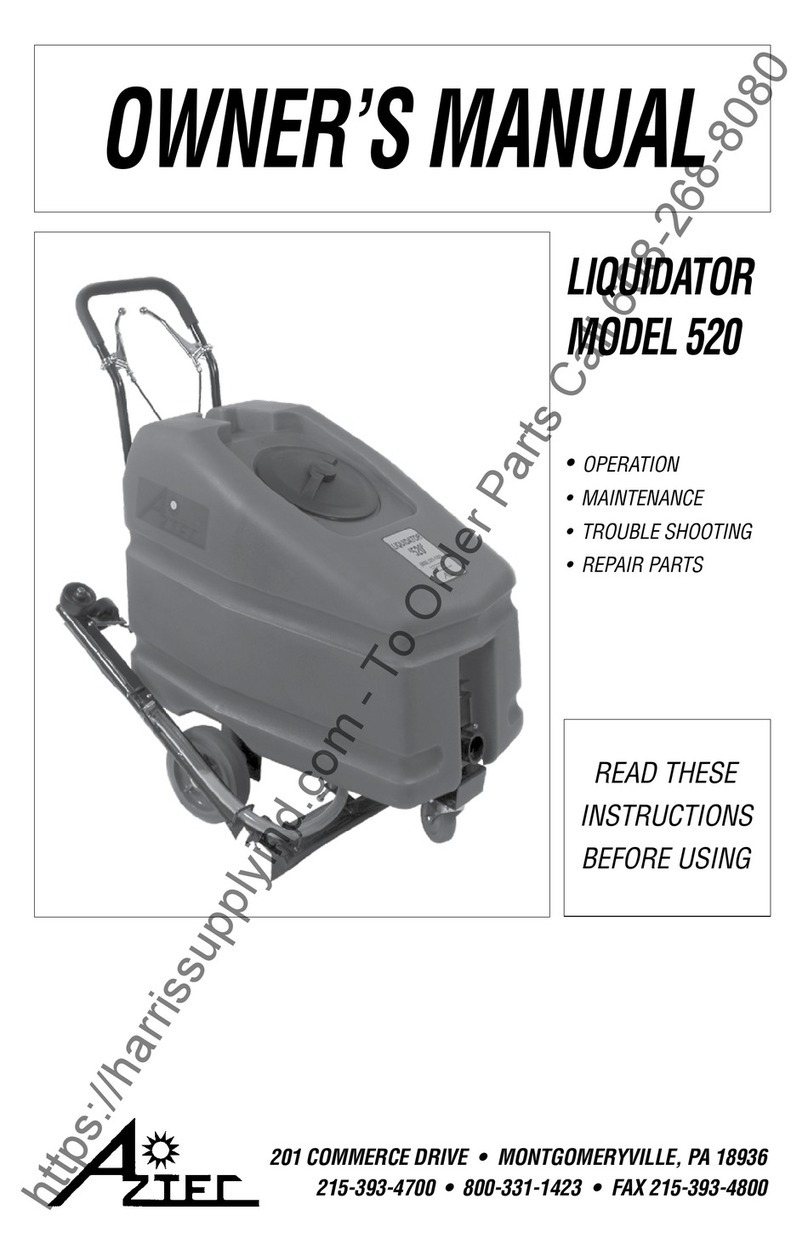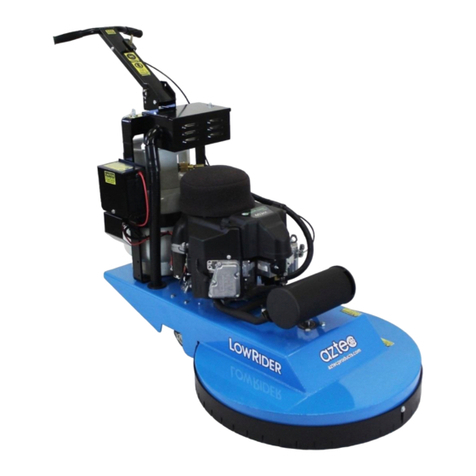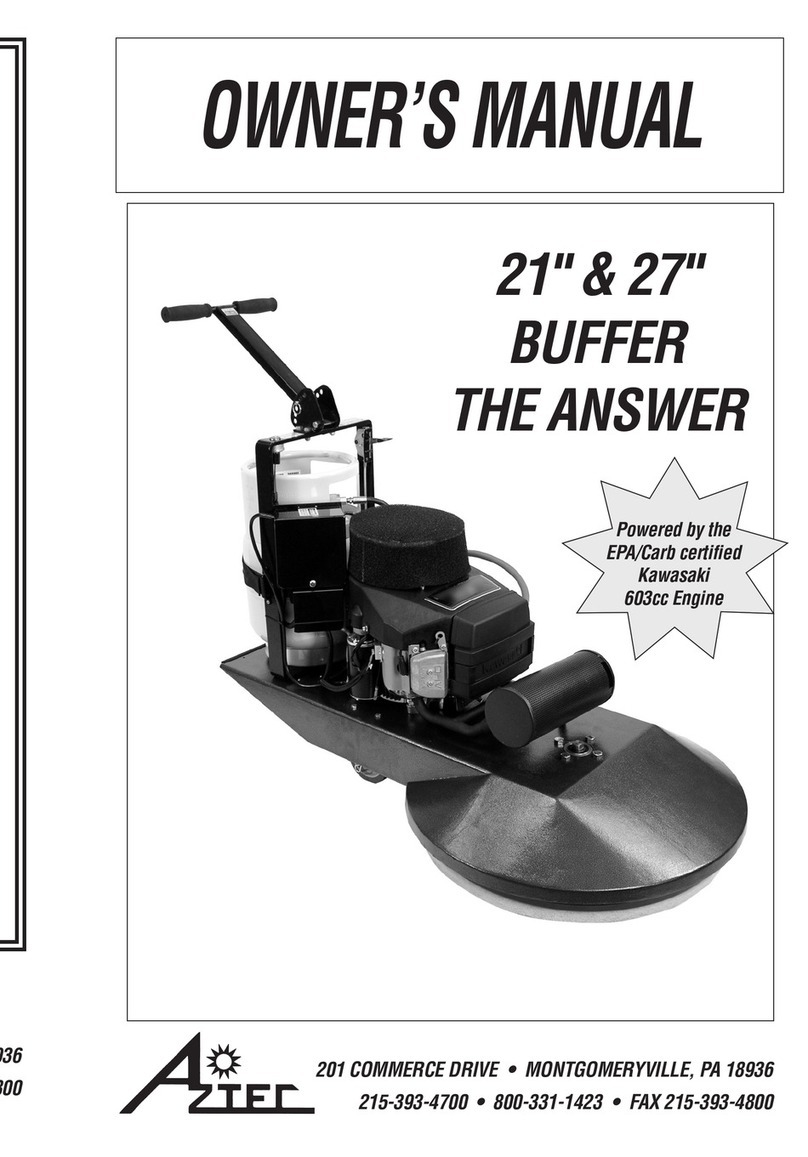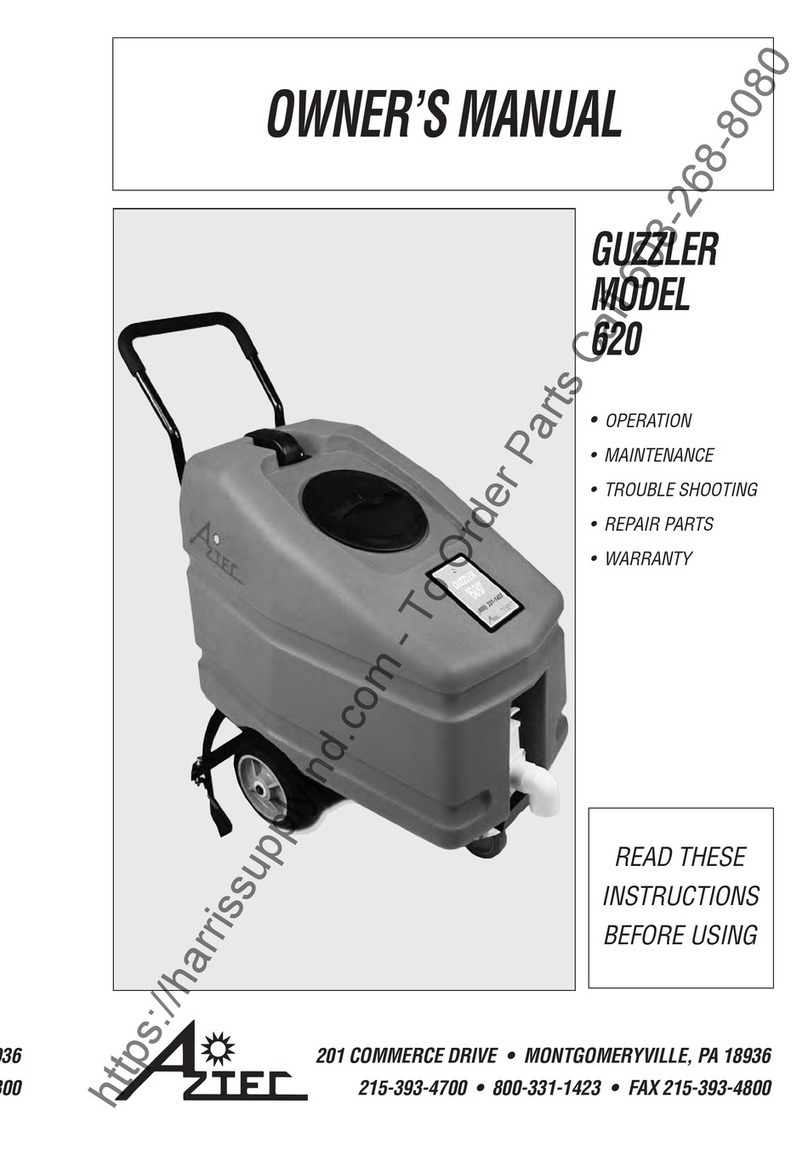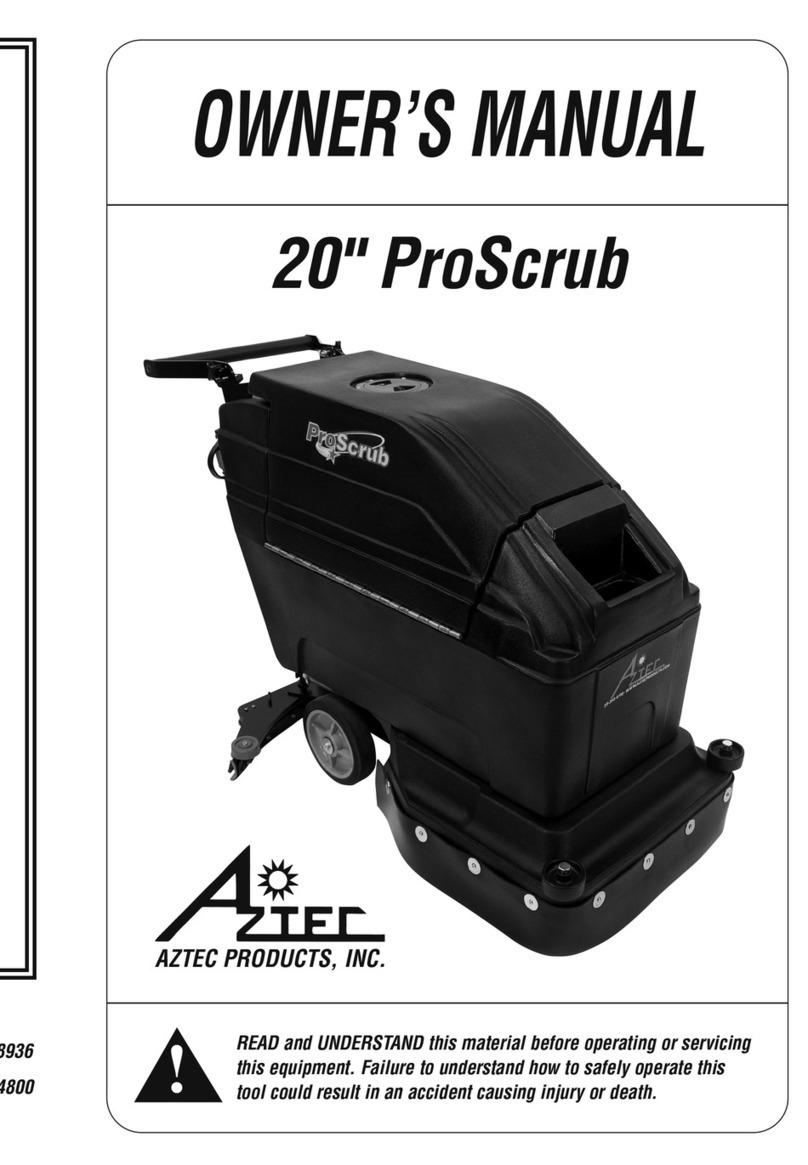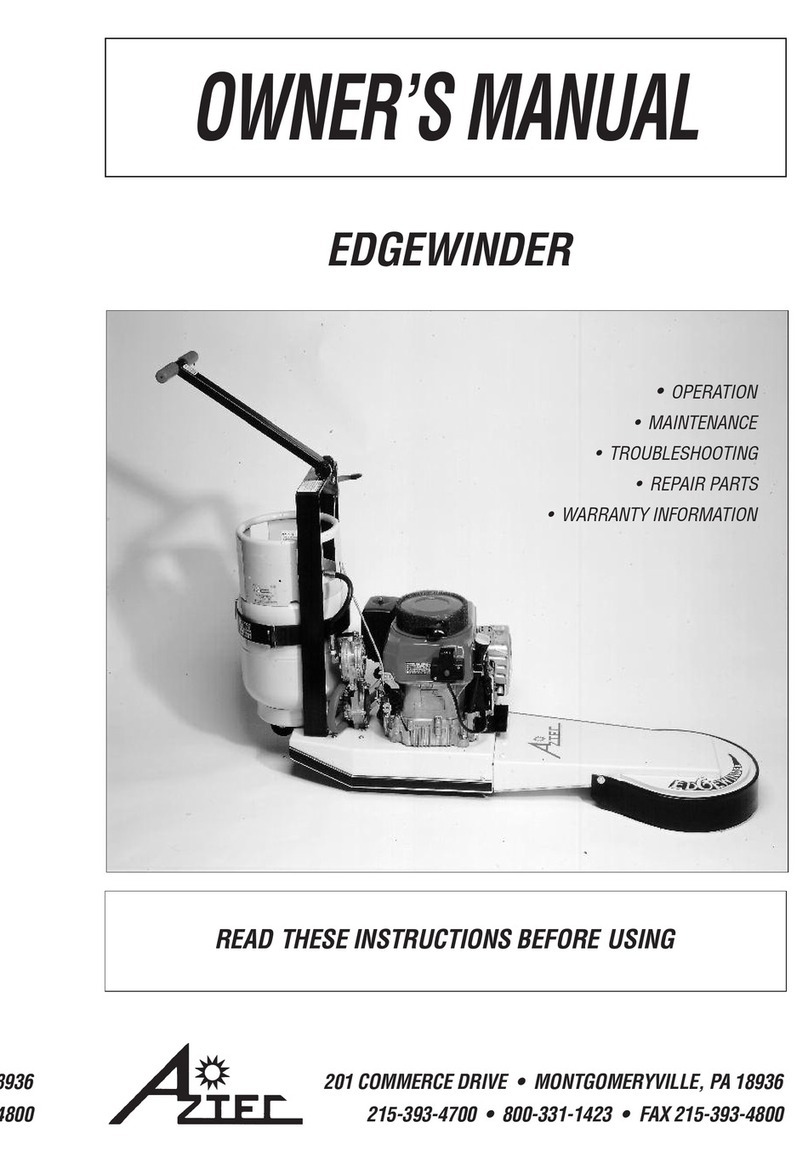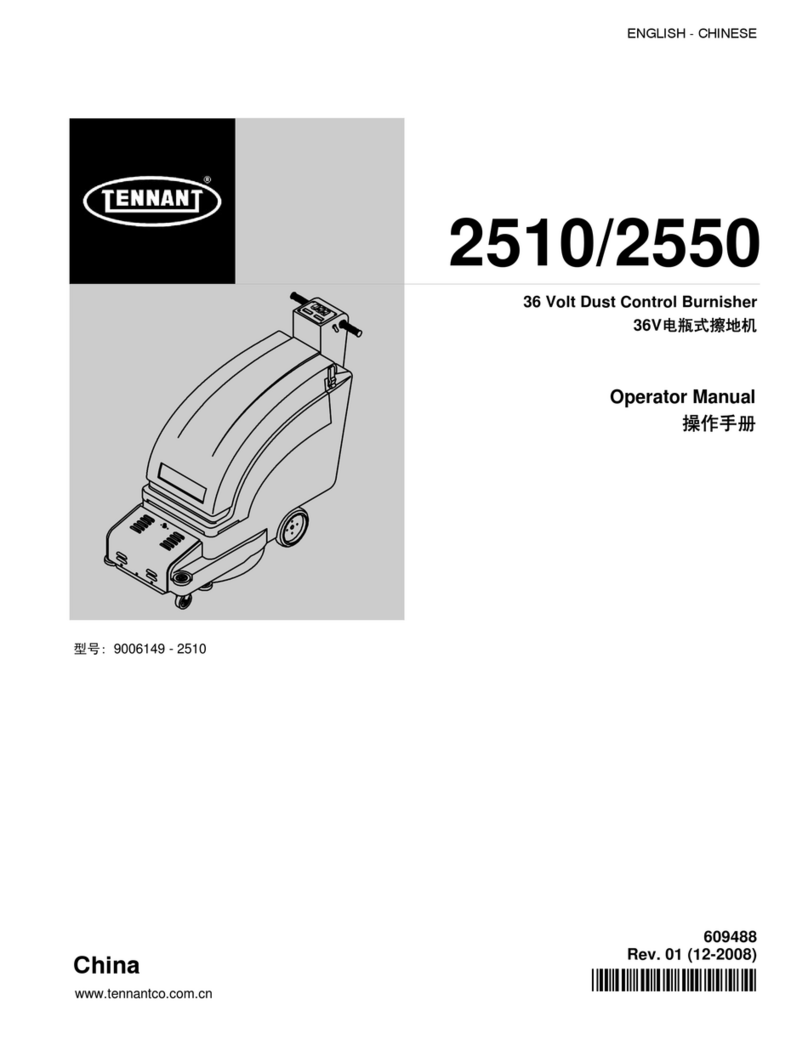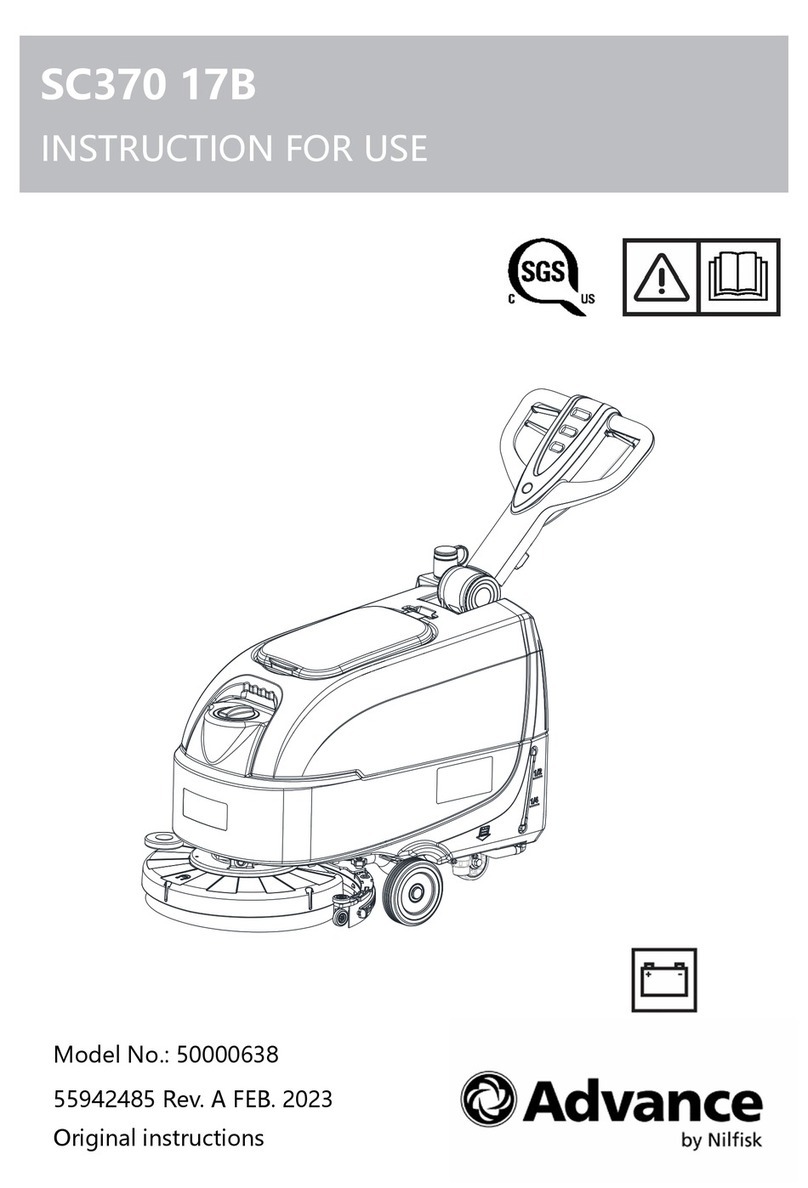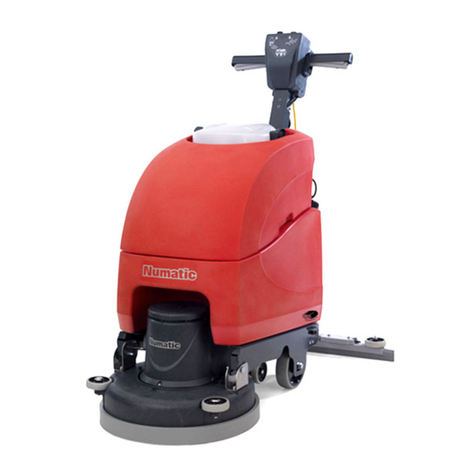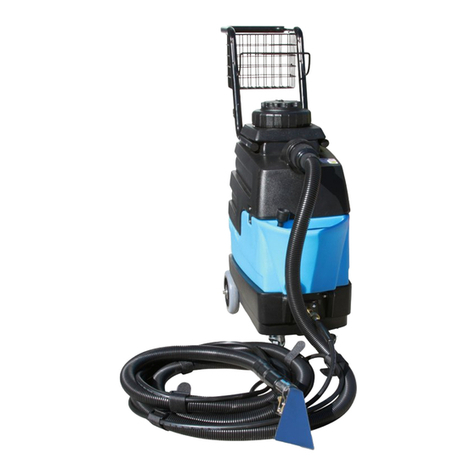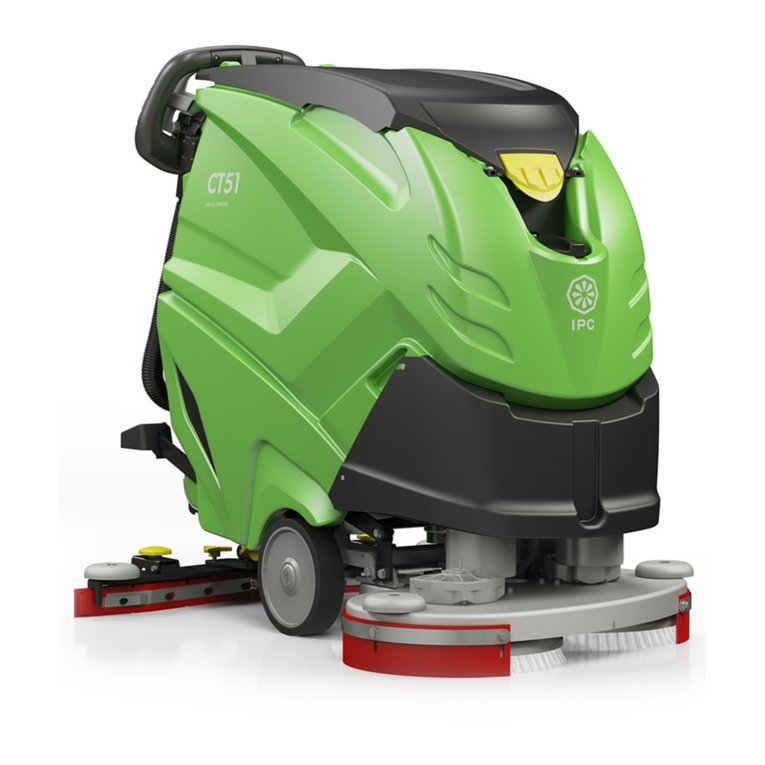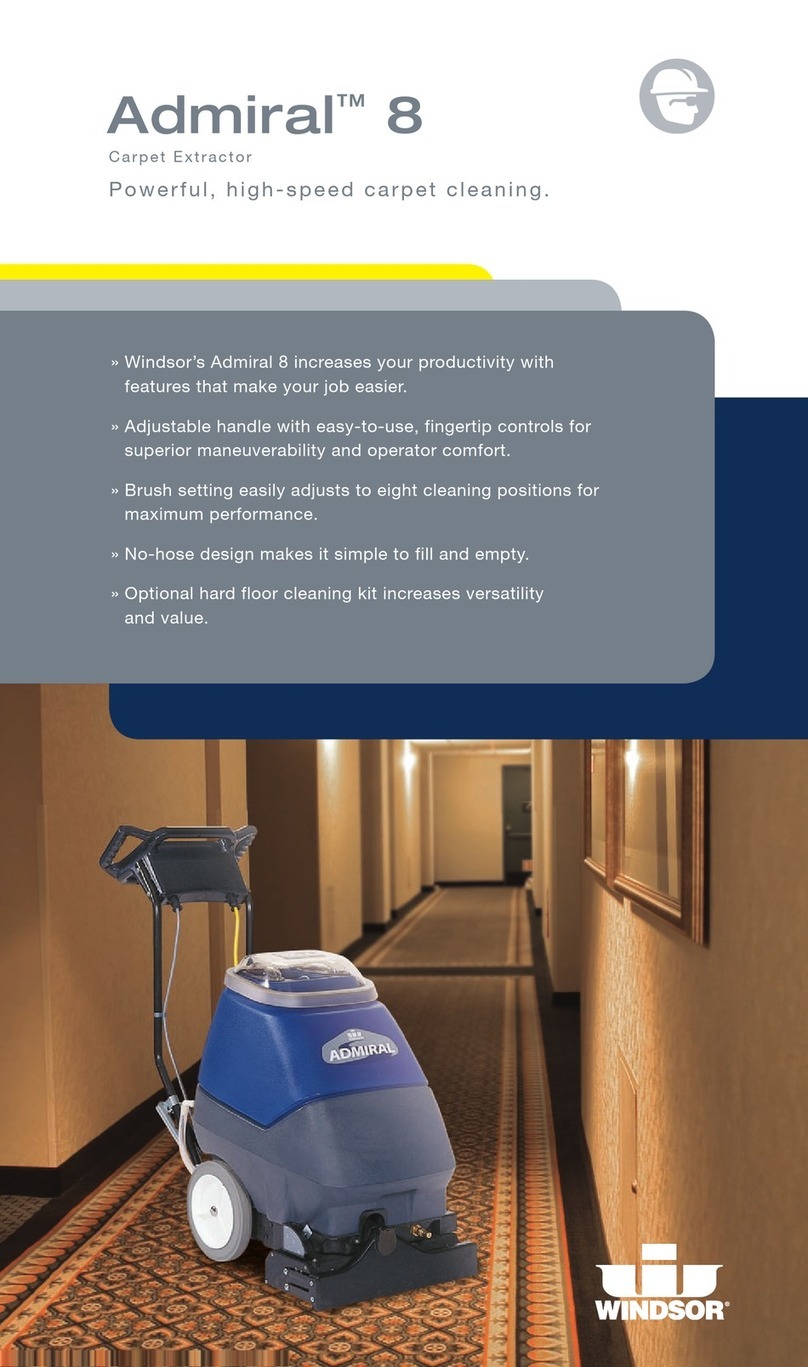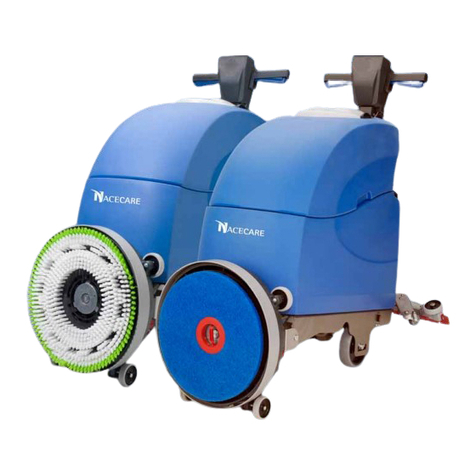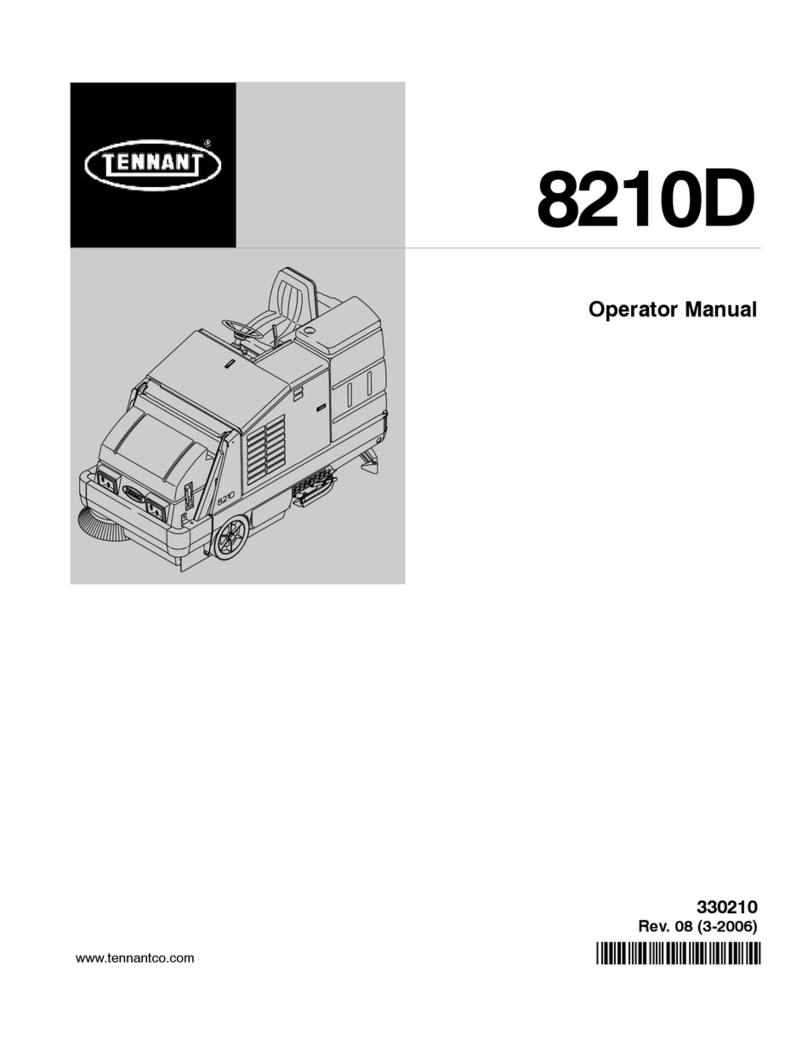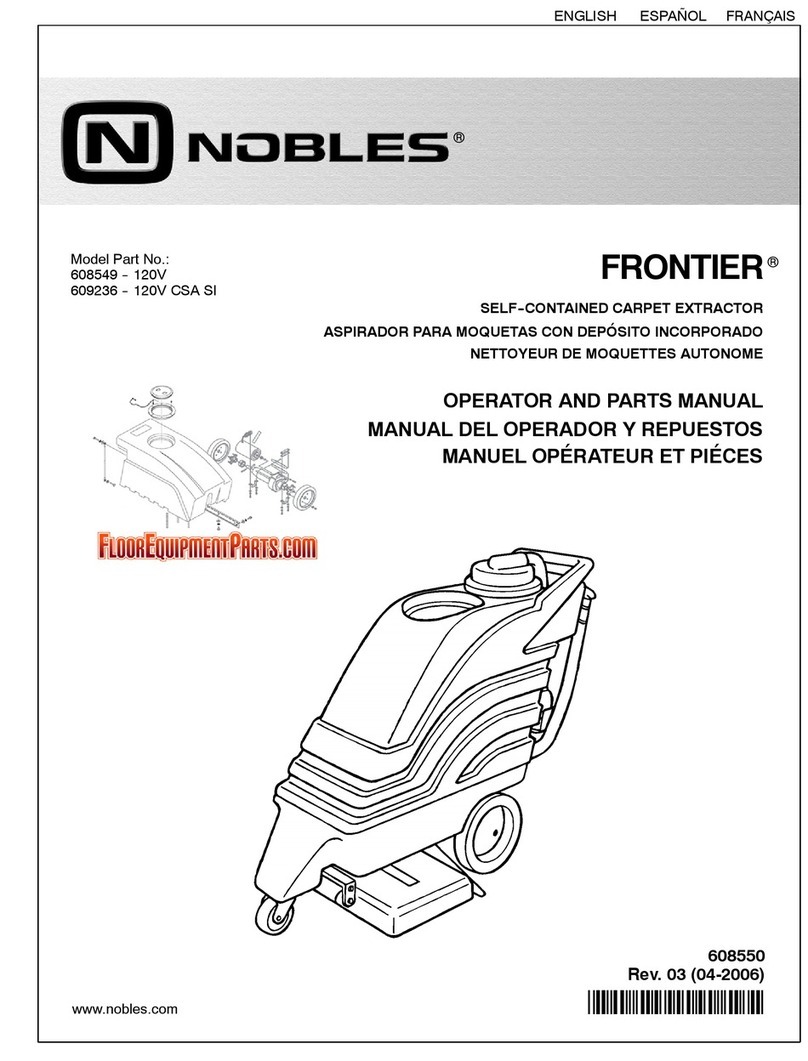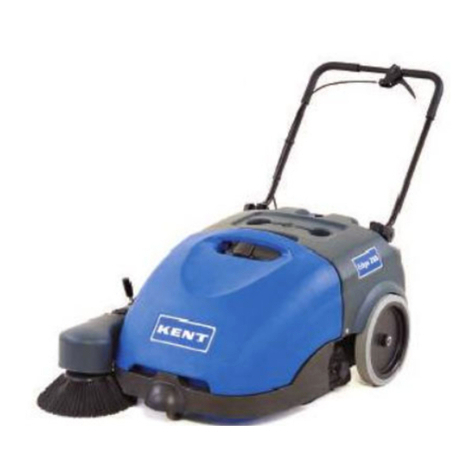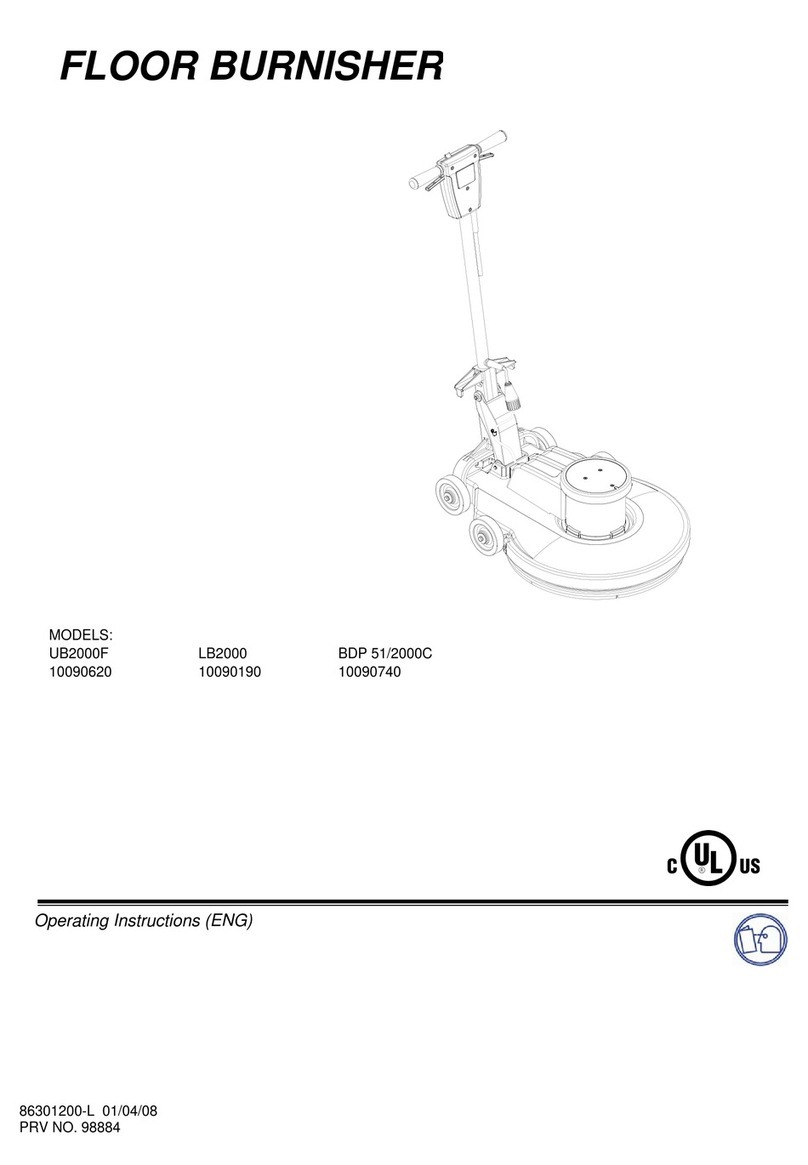Tachometer Firing patterns:
P1- 1 Spark: 1RPM-Most air cooled engines.
P2- 2 Sparks: 1RPM-Specialty engines, dual
point ignition
P3- 1 Spark: 2RPMs-Engines with ignitions driven
from camshafts or distributors
• Job Timer-to erase, be in the JOB TIME function
and hold mode button down for 3 seconds.
• Service Alarm-to program a service interval be in the
SVC SET function and hold the mode button down.
Release button on the desired hour. When the SVC
TIME reaches the service interval you programmed,
the display will flash indicating service is due. This
flashing will continue until the SVC TIME is cleared.
Perform necessary service then advance to the SVC
TIME function and hold the mode button down for 3
seconds, the SVC TIME will clear and the flashing
will stop. SVC TIME will now start building back up
to the service interval you programmed in SVC SET.
SIDEWINDER STRIPPING MACHINE
There are several factors involved in properly addressing
the surface of a floor to be stripped so that it can be
accomplished at the greatest speed with the least labor.
The design of the Sidewinder may seem complicated, yet
we assure you that its design is the reason it is so
effective. Therefore, you may want to be patient while
learning the “ins and outs” of the general maintenance
of this equipment.
Do not remove the six (6) 3/4" head bolts from the bottom
of the machine unless you have talked to Aztec technical
support. Note: If the engine runs, but the brushes do not
engage, this is usually related to either the clutch cable or
the main drive belt. Without disassembling this machine,
you can check and fix the following:
1. Is the cable connected to the “Clutch” lever on the
handle and to the springs (2) down below? Place
machine in “tilt back” position. Go under the machine
and reach your hand up between the lower drive
assembly and the body of the machine. You will
notice the cable sticking through the wall of the
battery box, and it should be connected to one (1)
return spring (j) and one 1) clutching spring (K). If
you can reach your arm up further, you will feel the
pulley of the main drive shaft for the input boom
pulley (S) (page 19 “Upper Drive Assembly” drawing.)
By just a touch, you should be able to manipulate a
fallen belt back in place. You will do well to master the
above procedure. Such a simple problem in the hands
of inexperienced people can cost a crew much of a
night’s work.
2. The next most common problem is letting the battery
run down. What usually happens is that it takes the
crew a few jobs to get used to the whole system, so
the Sidewinder is stopped and started quite often. We
recommend that under these conditions the operator
should start the machine by hand with the recoil
starter. (Don’t forget to turn the key to the “Off”
position when finished using.)
3. To change a belt—remove three (3) bolts on right
hand side of upper deck (3/4" wrench) (page 19(0)).
Then slowly raise the front of the machine off the
floor. Notice how the belt is set in its place as this will
help you in returning the new belt to its proper place.
Remove the idler pulley only (9/16" wrench). Notice
that one side of the idler pulley hub sticks out farther
than the other side. This is very important! The side
that sticks out the most should be put on first, facing
the idler plate. If it is put on the other way, the idler
may not turn and will not line up with the drive
(engine) and lower drive assembly pulleys. This will
accelerate belt wear and increase the chance of the
belt running off one of the pulleys. Check for wear on
the springs and their catches and on the idler
mentioned rather than take a chance on stranding an
entire crew at a lock-in job with a broken machine as
they get their system coordinated. The Sidewinder
should be kept in “new” condition both physically and
mechanically to ensure a minimum down-time factor.
RETURN GOODS POLICY
As an Aztec customer, you are aware that the equipment
we design and build is both innovative and unique. Since
this is true, in order to trouble-shoot our equipment, we
rely heavily on returned defective or failed parts so that
we can examine first-hand the causes of failure. While
this may at first seem to be an inconvenience, ultimately
you benefit from safer and better designed machine
components. Please give us the opportunity to serve you
better by following these RGA (Returned Goods
Authorization) rules.
1. We maintain the serial number, date of shipment or
sale, and customer name on each piece of equipment
sold. If you were the purchaser, please reference that
SIDEWINDER PG. 4
